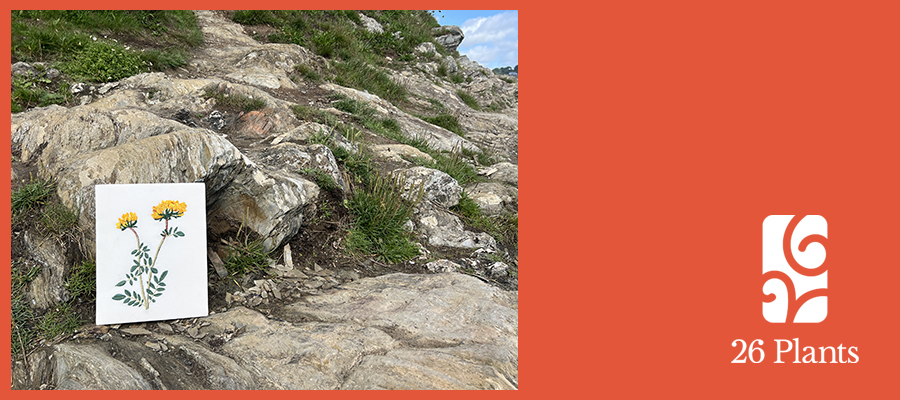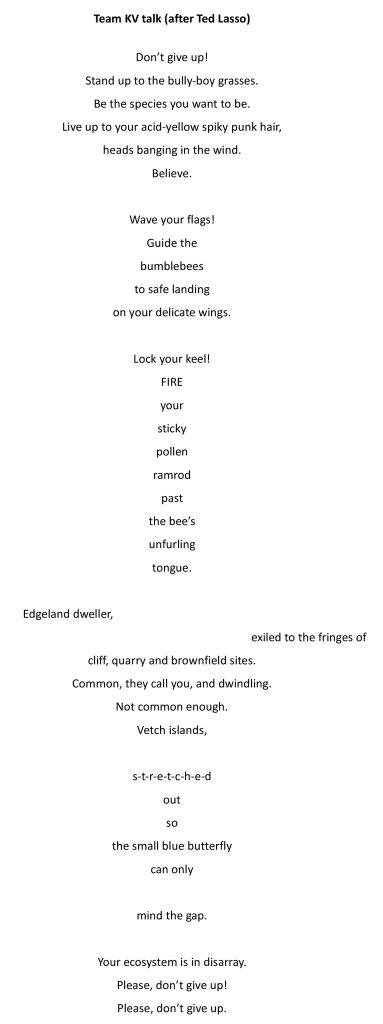Kidney Vetch
Anthyllis vulneraria
Julia Webb-Harvey


When my name was called forward to speak for the kidney vetch, I had a vague notion of where I might find it. Last summer I’d been walking with my friends Liz and Ash on the coast path around Loe Bar, at the top of the Lizard peninsular. With little more than scraps of memory of Liz’s wildflower pronouncements, I set out. It was mid-May, technically early for the flowering vetch, but in Cornwall the seasons run early. Turns out I didn’t have quite the memory I thought I had – I had homed in on the close relative, the Bird’s Foot Trefoil. Also yellow.
Back to the books. Or the browser.
‘The small yellow flowers and woolly appearance of kidney vetch make this plant easy to spot,’ sang out The Wildlife Trust. ‘Not to me!’ I thought. It’s part of the pea family, and to this untrained eye, has sibling characteristics of not only trefoil, but the horseshoe vetch.
Kidney vetch is entirely native to Britain, thriving on chalklands and scrubby bits of coastline. It’s classified as common – although numbers are dwindling through habitat destruction as well as being a very poor plant-competitor. It is vital to the rare small blue butterfly, being its entire feeding and breeding ground. Kidney vetch’s declining numbers make it incompatible for the long-term prospects of the small blue. It has taken management of chalklands to provide kidney vetch scrapes* to boost volume on the Surrey Downs. Islands of kidney vetch one kilometre apart are needed, not the receding bundles clinging on edgelands.
The kidney vetch is also special to the bumble bee – it is the only bee with a tongue long enough to get to the nectar at the back of the corolla. The anatomy of the kidney vetch flower is intricate and reads like an invention. The yellow flag petal signals the bumble bee in, and when it lands on the dual wing-petals, there is a chain-reaction. The weight of the bee locks in the keel-petal, which fires up a ramrod loaded with pollen that attaches to the bumble bee’s legs and undercarriage.
When I eventually found the correct yellow flower back on the Lizard, I thought about how humans have used it to cure wounds, treat stomach pains and kidney problems. But, in truth, the true value of the kidney vetch isn’t about us humans – it is in the delicate balance it has between bee and butterfly.
* A ‘scrape’ is a land management term, where the vegetation (grasses mostly), and top soil are scraped away to provide a poor soil for the wildflower (in this case, kidney vetch) to thrive.
Image: Embroidery by Carolyn Webb photographed on location at Pennance Point, Falmouth by Julia Webb-Harvey.
